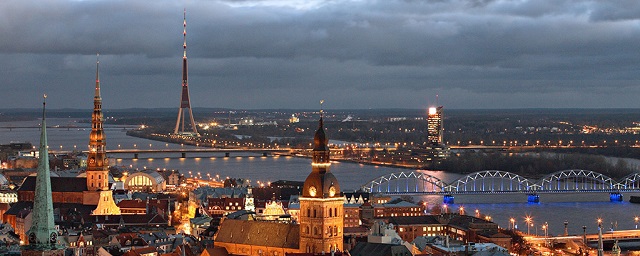Baltic countries experienced the same drastic fiscal austerity plans their Southern European neighbors are suffering between 2008 and 2010. Today they enjoy healthy accounts and growing economies, and aspire to enter technologically advanced industrial expansion phases.
They managed to get there in a climate of relative social peace and consensus, despite the fact that in a single year (2009) they carried out an average of 9% of GDP fiscal adjustment. In Lithuania, the largest of the three countries, the fall was 15% in that year. Latvia attained its full fiscal rehabilitation in 2009. Estonia achieved its objectives of stability (inflation, debt and deficit) so quickly, that on January 1 it became the member 17 of the eurozone. The adjustments released those countries enormous potential for growth: they grew at slightly higher rates to 5% in 2011, and between 2.6 and 2.8 percent in 2012, continuing their push in 2013.
The macroeconomic policy of those Baltic countries was exactly the opposite that are following Greece and Spain, of strong tax increase, delinquent fiscal expenditure reductions and slight structural reforms. Only now, under intense pressure from Brussels and after hard collisions with reality, the Spanish Government announces the imminence of a new package of reforms.
Adjustments were so quickly done that there were no political coalitions against fiscal stability in Baltic countries, unlike what we’ve seen, once again, in Greece and Italy. In Spain coalitions are starting to emerge under the Socialist Party, United Left Party and Andalousia and Catalonia regional governments.
Letonia will soon be eurozone’s member 18. The country already meets all the requirements, and any veto from other members is unlikely. Four years ago its situation was catastrophic; in 2009 its GDP shrank by 20%. Unemployment reached 20%. A bailout program, implemented by the European Union and the International Monetary Fund, which included €7,500 million in aid was needed.
Swedish central bank backed Latvian economy back then. The national currency, the lat, established parity with the euro, and thus could maintain its credibility during the reform process. That also helped the recovery since the country’s debt was relatively low, 45% of GDP. At the end of 2012 the government announced they would advance the payment of a term of the IMF credit, €714 million.
Although unemployment is still very high, Latvian Prime Minister Valdis Dombrovsky, is exultant. Latvia has ratified the Fiscal Pact, and its economy has the sights set on export. Dombrovsky takes for granted that Latvia will enter the euro in 2014. However, the support of the population to this measure is not assured: only one third of the population is for the euro, according to some estimates. This is explained by the fact that the economic recovery has been achieved at the expense of a drastic readjustment of wages.
Embracing the euro could be subjected to referendum. At least that is what President of the Constitutional Court Gunars Kutris thinks. Much of the euro-opposition comes from the population of Russian origin, who believe a strong European vocation will put distances with the Soviet past and reduce the strong cultural and economic influence of Moscow.
The Lithuanian share the same faith in the euro. That faith led them to a drastic plan of readjustment, which affected 12% of GDP in two years. The salaries of the administration were reduced by 20% on average and pensions by 10%. “Our reset – declared President Grybauskaite to Der Spiegel in late April – was much deeper from what we see today in southern Europe. Thus we had growth within two years.”
Ms. Grybauskaite perceives the existence of a breach of civic culture between the North and the South of Europe, which explains the difference in the pace of recovery of the two geoeconomic areas. “The reforms could be faster in some other parts. There are differences in mentality and different ideas about political responsibility in the North and in the South.” This is the kind of thinking that in the South is generally attributed to Chancellor Merkel, although she has never talked in such harsh terms.
There is a more significant gap: education. Lithuania, Estonia and Latvia are in the positions 1, 4 and 6 respectively in the number of people who achieved a degree of high or medioum level education in 2012, while Italy, Spain and Portugal were the positions 24, 25 and 27, according to the Eurostat database.






Be the first to comment on "The Baltic Boom: there is life after austerity"